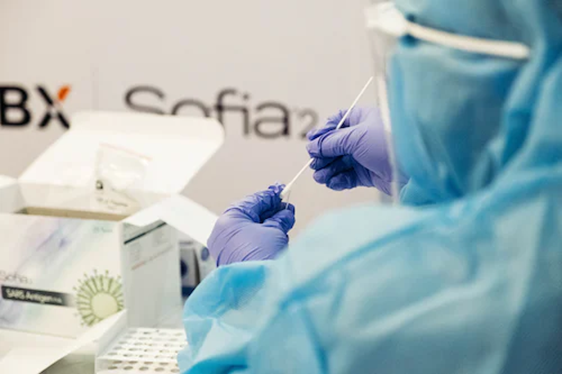First, we will discuss medical masks (cloth, surgical, and N95) and their uses. Then, we will look at plastic gloves, as well as coveralls and aprons. Next, we will uncover the necessity of hard hats, and finally, the vitality of earplugs. All of these kinds of PPE serve different protective purposes and help hardworking professionals stay safe while they do their jobs.
Medical Masks
Since the COVID-19 pandemic, we are all very aware of medical masks and their role in preventing the spread of germs and the inhalation of air pollutants. There is more than one type of medical mask, and we will break these variations down below. There are also face shields and visors to protect the airways from exposure to harmful microorganisms and chemicals in the air. All masks should cover the nose and mouth.
Cloth Masks
Cloth masks are some of the most common types of face masks and they can be homemade or bought. They comprise several layers of fabric to prevent any water droplets from your breath from getting through the mask. They also prevent other people’s breath from reaching your nose and mouth. This reduces the risks of spreading germs. Cloth masks are washable and reusable.
Surgical Masks
Meanwhile, surgical masks are commonly worn in medical centers and they are not washable or reusable. Once they are worn, they should be disposed of safely. Medical masks protect wearers from catching a virus or cold, and also help to keep sterile areas clean of germs, such as operating rooms. Members of the public still sometimes wear surgical masks to protect themselves on public transport and in hospitals.
N95 Respirator
The N95 respirator is another kind of medical-grade mask, but this one is almost exclusively reserved for medical professionals. They filter about 95% of water droplets and particles, making them nearly flawless at keeping medics safe from viruses. These masks, unlike the ones mentioned above, are tight-fitting and must be fitted properly before use.
Plastic Gloves
Plastic gloves are another key component of PPE. These gloves protect medics, tattoo artists, chefs, and other professionals with jobs that are at high risk for contamination-related issues. Not only do the gloves protect the workers, but also their clients. People who are operated on in unsterile conditions, tattooed by someone with bare hands, or eat food prepared in an unsanitary manner can experience terrible repercussions such as sickness and infection. They can also sue the professional who did not wear gloves, as this is reckless and negligent. People who work with exposure to body fluids, raw meat, or other potentially harmful substances, or vulnerable people, should use PPE to protect their clients and themselves.
Coveralls and Aprons
Coveralls and aprons are commonly worn by people who work with biohazards or dangerous chemical compounds, medics, chefs, and others who risk spills. They protect the body and clothing from harm and prevent contamination. You can get disposable aprons or heavy-duty reusable coveralls, depending on your business needs and associated risks.
Hard Hats
If you work on a construction site, drive motorbikes, ride horses, or find yourself in any other environment that poses a risk of falling or being exposed to falling objects, it is imperative to wear head protection. This can prevent serious head and brain injuries and even wrongful death. Protect your head at all costs with proper PPE.
Earplugs
Finally, if you work with loud equipment like road drills, concert speakers, or any other sources of dangerously loud noise (over 85 decibels) you should use earplugs or earmuffs to protect your hearing. Noises over 70 dB can harm your hearing over time, while sounds at 120 dB and louder can cause immediate harm to your eardrums. A good general rule of thumb is that if you feel like something is too loud, then it is too loud for your ears. Keep your eardrums healthy and safe by muffling loud noises and reducing your risks of hearing loss.
This has been an exploration of the different kinds of PPE, with a focus on cloth, surgical and N95 respirator masks, plastic gloves, coveralls and overalls, hard hats, and earplugs. These different types of PPE all protect different parts of the body, and some of them, such as masks, gloves, and aprons, also protect the people who will benefit from the work being done, be that diners in a restaurant or patients under the knife. PPE is a vital part of many industries and it should never be overlooked, as it protects both the workers and in many instances the clients or service users as well.








